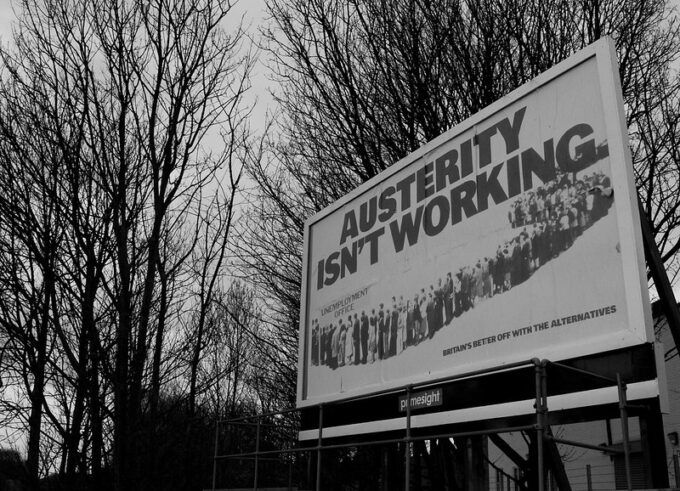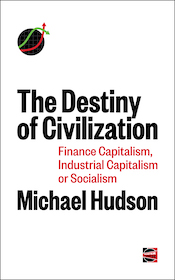THE INHERITANCE OF LOSS
America’s new wealthy have so little to offer society

AP PHOTO/MATT SAYLES

By Sean McElwee
United States May 9, 2014 This article is more than 2 years old.
In F. Scott Fitzgerald’s The Great Gatsby, East Egg represents inherited wealth and privilege, while West Egg represents wealth earned through innovation and hard work, a distinction at the core of the American ideal. We have always embraced a dynamic capitalism, marked not by stasis but rather “creative destruction,” lionizing trust-busters as heroes of competition. Joseph Schumpeter, who coined the phrase, feared that eventually capitalism would lead to corporatism and destroy the entrepreneur, the lifeblood of the capitalist system. One disturbing implication of Thomas Piketty’s new book, Capital, is that the American economy is slipping into a form of “rentier” capitalism, in which passive income from wealth, increasingly in the form of inherited fortunes, is supplanting dynamism, hard work and innovation. The term rentier came into use in the mid-19th century to describe people who lived off income from property rather than creating something of value. And now the rentiers have found a way to protect their gains—buying influence in the political system.
The rise of rentier capitalism
Richard Hofstadter observed about American capitalism, “Once great men created fortunes; today a great system creates fortunate men.” This was what Fitzgerald saw in the 1920s: dead, inherited wealth next to dynamic new money. He saw the former as aristocratic, with only the facade of knowledge and virtue, while the latter was entirely uninterested in wisdom and seduced by wealth. Oscar Wilde observed the same in Victorian England, where the illusion of virtue (being named Earnest) was far more important than its practice. Today, much the same dynamic exists between the inherited rentier wealth of the Kochs and Waltons and the new money of the Zuckerbergs and Brins. There was a day when aristocrats were at least cultured. Today, instead, we have a wealthy class with the culture of new money and innovativeness of old money (i.e., rather little of either). This new rentier class, with little to offer society, subsists largely on legalized grift or, in economic terms, rent.
Rents comes in two forms, both referring to income received as a result of status rather than earned by hard work or as compensation for a product, idea or service that benefits society broadly. The first form is inherited wealth and the second is monopolistic market power. The first is easy to see. The second has changed from vertical business trusts to Jamie Dimon as the reincarnation of J. Pierrepont Morgan armed with supercomputers, phalanxes of physicists for quantitative analysis and legions of lobbyists. In our post-liberal economy, these two types of rentiers interact in a feedback loop that has changed the meaning of American inspired (and imposed) western capitalism.
Thomas Piketty paints a dystopian picture of the consequences of this accumulation of wealth in his new book. Piketty describes an underlying property of capitalist economies—if return on capital assets exceeds growth of the economy, wealth will flow into investment in assets, land, companies and financial assets and away from entrepreneurial innovation. Innovation requires distribution of income to the workers who produce products and services, empowering them to consume such goods and services in a virtuous circle measured by consumption driven growth. In contrast, the pool of passive capital asset investment will grow as earnings accumulate instead of being used for consumption. For Piketty, this is the usual configuration of a capitalist economy, rather than the idyllic days of 1945-1979 during which equality increased and the financial well-being and security of the “typical American family” marched relentlessly forward.
Today, America’s top 1% makes its income primarily from capital, not labor.

Piketty writes, “In terms of total amounts involved, inheritance has thus nearly regained the importance it had for nineteenth century cohorts.”

He notes, however, that this truth has yet to reach popular culture, where “recent American TV series feature heroes and heroines laden with degrees and high-level skills.”
Piketty concludes that we may soon reach a point in which social rent-seeking àl la marrying wealthy will be a far more effective path to prosperity than entrepreneurship. This is how capitalism dies—not with a revolution—but rather vitiated by rentiers, increasingly myopic and addicted like a junkie to the high of wealth accumulation.
The rise of rentier finance
These conditions are closely related to the massive growth of an overtly rent-seeking financial sector. Rather than investing in the “real economy,” financiers make money through increasingly obfuscated and complex financial “innovations.” With the deregulation of finance in the Clinton era, finance became increasingly rent-seeking, building towers of leverage rather than companies. During the period of growing disparity of incomes and wealth described by Piketty, this differential between financial sector wages has increased by a staggering amount. Thomas Philippon and Ariell Reshef, find that, “that rents accounted for 30% to 50% of the wage differential between the financial sector and the rest of the private sector.”

Investment in the rent-supercharged financial sector itself has been a primary destination for accumulated wealth and it has greatly increased returns relative to growth. This capital investment fuels the growth of the rent-seeking business of the financial sector, which causes wealth to accumulate and need to be invested, and so on in a loop. The two trends reinforce each other.
The politics of rent
The development of rentier capitalism was not inevitable. The most nakedly self-interested class in modern history owes a substantial debt to a slavish political system. As Paul Krugman notes of Bush era policies, “True, the top tax bracket on earned income fell from 39.6 to 35 percent. But the top rate on dividends fell from 39.6 percent (because they were taxed as ordinary income) to 15 percent — and the estate tax was completely eliminated.”
The Koch brothers, who bankroll a large portion of the conservative dis-information machine are great examples. They claim to love free markets but in truth nothing terrifies them more. The freedom that they seek is the freedom to exploit the market power that their inherited wealth affords them. They use the political sphere to entrench the wealth inherited from their father. Piketty notes that the American tradition is one of high progressive taxation, especially on bequests, to prevent an American analog to European-style aristocracy. Even the patron saint of libertarianism, Robert Nozick, argued that an estate tax was fair, and suggested that, “taxes will subtract from the possessions people can bequeath the value of what they themselves have received through bequests.” Two generations of rentiers are rather enough.
As we have seen, the financial sector perpetuates and is fueled by the new rentier class. In her book, All The Presidents’ Bankers, Nomi Prins traces the history of banker influence in the highest corridors of power, when “the titans of banking” replaces “the barons of industry as the beacons of economic supremacy in the United States.”
Economic inequality perpetuates itself through political inequality, which breeds cronyism. Supreme Court decisions like McCutcheon and Citizen’s United enhance the power of the super wealthy to use the political system to extract rents. Larry Bartels, Martin Gilens, Dorian Warren, Jacob Hacker, Paul Pierson, and Kay Lehman Schlozman have found that the rise in economic inequality has coincided with a rise in political inequality. The wealthy are using the political system to bolster their wealth, and while both parties are certainly complicit, in few eras has the political system been so nakedly captured by big money.
The implications
The implications are stark. First, liberals must note the important distinction between wealth earned through creativity and labor and wealth accumulated to capital, and focus their attention on the latter.
A growing portion of today’s moneyed elite is neither virtuous nor meritorious, it is parasitic. Second, government must create an economy that rewards work, not property. The Lockean ideal quickly becomes farce when one family owns more wealth than the poorest 40 million Americans.
Taxing inheritance and empowering the middle and lower income segments of society will slow the drift toward an economy dominated by a growing rentier class. Moreover, a moderate increase in inflation could greatly benefit the vast majority of Americans. Higher inflation, even higher than the official target, would adversely affect the asset-holding super rich whose asset value would erode with inflation, but would benefit the rest of the public by encouraging immediate consumption and decreasing the burden of existing debt.
But there is a more fundamental way to address the problem. The modern financial sector constitutes a powerful extra-governmental system of redistribution in favor of the wealthiest Americans. A large portion of the financial sector is in the business of extracting value from the flows of money within the economy with little or no benefit to the intermediation of the allocation of investment capital to socially beneficial uses.
The financial reforms that were adopted in response to the 2008 financial crash were overwhelmingly focused on reducing the potential for a repeat of the catastrophic run on the financial system that triggered the crisis. While this was an admirable endeavor, a second phase of reform of the financial sector limiting its role in the accumulation of wealth at the top and the stagnation and decline of the well-being and security of the rest of society is essential to a return to a sustainable economy. The myriad practices through which the financial sector extracts value from the system without enhancing the process of allocating capital to purposes that serve the public must be eliminated to reverse the drift toward a rentier economy. These practices can be identified, starting with high-speed trading, predatory derivatives transactions, and tax incentives for hedge funds. Policy makers simply need to develop the backbone to deal with them.










